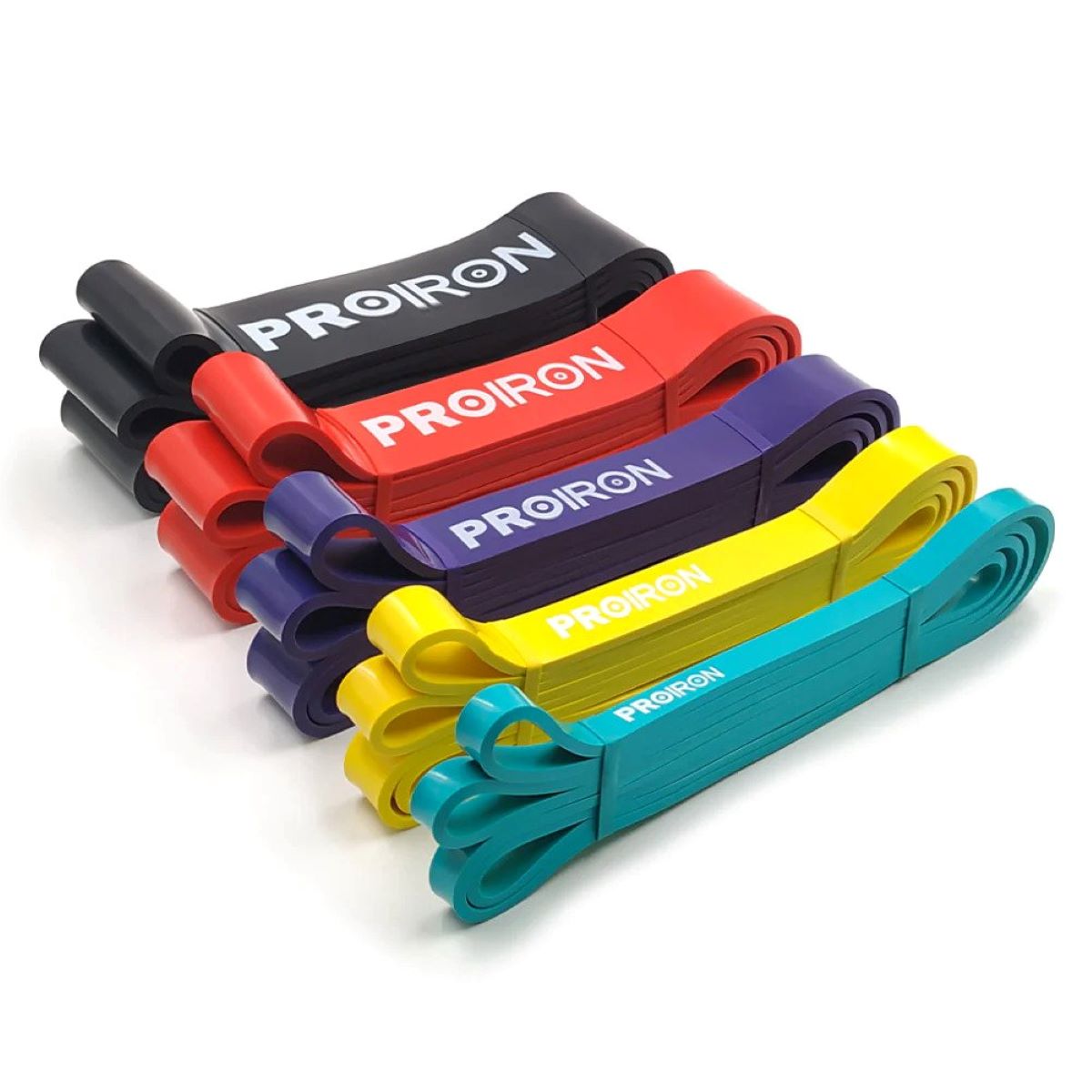

Articles
How To Store Resistance Bands
Modified: January 21, 2024
Learn how to store resistance bands properly with our informative articles. Keep your bands organized and in good condition for long-lasting use.
(Many of the links in this article redirect to a specific reviewed product. Your purchase of these products through affiliate links helps to generate commission for Storables.com, at no extra cost. Learn more)
Introduction
Resistance bands are versatile and effective workout tools that can be used for strength training, muscle toning, and rehabilitation exercises. They provide resistance in various levels to target different muscle groups, making them suitable for people of all fitness levels. To ensure their longevity and prevent damage, it is important to store resistance bands properly when they are not in use.
In this article, we will explore the benefits of storing resistance bands correctly, tips for choosing the right storage solution, popular storage options available in the market, and even some DIY ideas for those who prefer a more personalized approach. By the end of this article, you will have all the knowledge you need to keep your resistance bands organized, neat, and ready for your next workout session.
Key Takeaways:
- Properly storing resistance bands preserves their lifespan, organizes workout spaces, prevents damage, enhances safety, and maintains consistent resistance levels, contributing to a seamless and enjoyable fitness journey.
- When choosing a storage solution, consider factors such as space availability, accessibility, durability, portability, and visibility. Popular options include resistance band tubes, wall-mounted racks, hanging organizers, and storage bins or baskets, providing convenient and efficient storage for resistance bands.
Read more: How To Store Band-Aids
Benefits of Storing Resistance Bands Properly
Properly storing your resistance bands offers several key benefits:
- Preserves the Life of the Bands: Storing your resistance bands correctly helps maintain their elasticity and prevents them from becoming stretched out or worn down. This extends the lifespan of the bands, allowing you to continue using them for longer periods.
- Organizes Your Workout Space: Storing your resistance bands in a designated space keeps your workout area neat and clutter-free. This makes it easier to find the specific bands you need for each exercise and eliminates the frustration of searching for misplaced equipment.
- Prevents Tangling and Damage: Proper storage prevents resistance bands from getting tangled or intertwined with other equipment or objects. When bands become twisted or knotted, they can be difficult to untangle and may even become damaged in the process.
- Enhances Safety: Storing resistance bands properly eliminates the risk of tripping over them or inadvertently causing injury. When organized and stored away, they are less likely to pose a hazard in your workout space.
- Maintains Consistency in Resistance Levels: By storing your resistance bands properly, you can ensure that each band retains its original resistance level. This consistency is important for progressive training, allowing you to gradually increase the intensity of your workouts.
By understanding the benefits of storing resistance bands properly, you can take the necessary steps to maintain their quality and functionality. Let’s now explore some tips for choosing the right storage solution for your needs.
Choosing the Right Storage Solution
When it comes to selecting a storage solution for your resistance bands, there are a few factors to consider:
- Space Availability: Assess the amount of space you have in your workout area or home gym. If you have limited space, consider storage options that are compact and can be easily tucked away when not in use.
- Accessibility: Choose a storage solution that allows for quick and easy access to your resistance bands. This will help you stay organized and save time during your workouts.
- Durability: Look for storage options that are built to withstand the weight and tension of resistance bands. Ensure that the materials used are sturdy and long-lasting.
- Portability: If you plan on taking your resistance bands with you on the go, opt for a storage solution that is portable and convenient to carry.
- Visibility: Consider storage options that provide clear visibility of your resistance bands. This makes it easier to identify the resistance level and choose the appropriate band for your workout.
Based on these factors, you can choose from a variety of storage solutions available in the market.
Some popular storage options for resistance bands include:
- Resistance Band Tubes: These are cylindrical tubes with hooks or clips that allow you to secure and store your resistance bands. They often come with compartments or pockets to store other small accessories like handles or ankle straps.
- Wall Mount Racks: Wall-mounted racks are convenient for storing resistance bands and keeping them easily accessible. They can be installed on the wall, saving floor space and providing a tidy storage solution.
- Hanging Organizers: Hanging organizers with multiple pockets are a practical storage option for resistance bands. They can be hung on a door, wall, or placed inside a closet, offering easy access and keeping the bands organized.
- Storage Bins or Baskets: Bins or baskets are versatile storage solutions that can be used to store resistance bands along with other fitness equipment. They come in various sizes and can be placed on shelves or in cabinets.
Now that you have an idea of the different storage solutions available, let’s move on to some essential tips for storing your resistance bands effectively.
Tips for Storing Resistance Bands
Follow these useful tips to ensure you store your resistance bands properly:
- Keep them Clean and Dry: Before storing your resistance bands, make sure they are clean and dry to prevent any moisture or dirt buildup. Wipe them down with a clean cloth or towel after each use.
- Separate by Resistance Level: To easily locate the appropriate resistance band, separate them by their resistance level. This will help you quickly identify the band you need for your desired intensity.
- Use Protective Sleeves or Bags: Consider using protective sleeves or bags to store your resistance bands. These can help protect the bands from dust, dirt, and potential damage.
- Avoid Sharp Edges: When storing your resistance bands, make sure to avoid sharp edges or rough surfaces that could cause them to tear or deteriorate. Opt for smooth, clean storage options.
- Store Handles and Attachments Separately: If your resistance bands come with handles, ankle straps, or other attachments, it’s best to store them separately to prevent them from tangling with the bands.
- Label or Color Code: Consider labeling your storage containers or using color-coding systems to easily identify different resistance levels or types of resistance bands.
- Consider Temperature and Humidity: Take into account the temperature and humidity levels in your storage area. Extreme heat or moisture can affect the elasticity and lifespan of the resistance bands.
- Regularly Inspect for Damage: Periodically inspect your resistance bands for any signs of wear and tear. If you notice any damage, it’s essential to replace the affected bands to maintain safety and effectiveness.
By implementing these tips, you can ensure your resistance bands stay in optimal condition and are ready to use whenever you need them. If you prefer a more personalized and creative storage solution, let’s explore some DIY ideas in the next section.
When storing resistance bands, it’s best to keep them in a cool, dry place away from direct sunlight. You can coil them up and store them in a drawer or hang them on a hook to keep them organized and prevent damage.
Popular Storage Options for Resistance Bands
When it comes to storing your resistance bands, there are several popular options available in the market. Let’s take a look at some of them:
- Resistance Band Tubes or Cases: These storage options are specifically designed to hold resistance bands. They often come in the form of cylindrical tubes or cases with built-in compartments or pockets to keep your bands organized. Some even have handles for easy carrying.
- Wall-Mounted Racks: Wall-mounted racks are a great space-saving solution. They can be easily mounted on any wall, providing a dedicated space to hang and store your resistance bands. This option allows for easy access and keeps your bands off the floor.
- Hanging Organizers: Hanging organizers with multiple pockets or compartments are perfect for storing your resistance bands. They can be hung on a wall, door, or even inside a closet, providing a convenient and visible storage solution.
- Storage Bins or Baskets: Storage bins or baskets are versatile options that can accommodate your resistance bands along with other fitness equipment. They come in various sizes and can be placed on shelves, in cabinets, or even under your workout bench.
- Drawer Organizers: If you have a designated drawer for your workout gear, using drawer organizers with different compartments can help keep your resistance bands tidy and easily accessible.
- Portable Carrying Cases: For those who frequently travel or take their resistance bands on the go, portable carrying cases are ideal. These cases are designed to hold and protect your bands while providing convenient transportation.
- Pegboards: Using a pegboard in your workout area can be a practical storage option for resistance bands. Attach hooks to the pegboard and hang your bands, making them easily visible and accessible.
- Bungee Cord Storage: Repurpose bungee cords by securing them to a pole or wall-mounted hooks. Use the bungee cords to hold your resistance bands in place, creating a unique and simple storage solution.
Remember, the key is to find a storage option that suits your space, personal preference, and budget. Additionally, consider factors like accessibility, visibility, and protection when making your choice.
If you prefer a more hands-on approach or want to add a personal touch to your resistance band storage, let’s explore some DIY ideas in the next section.
Read more: How To Store Rubber Bands
DIY Storage Ideas for Resistance Bands
If you’re feeling creative and enjoy do-it-yourself projects, here are some DIY storage ideas for your resistance bands:
- PVC Pipe Storage Rack: Cut a PVC pipe into several equal-sized sections and attach them horizontally to a wooden board. Mount the board on a wall, and use the PVC sections to hold your resistance bands. This creates a simple and inexpensive storage rack.
- Hanging Shoe Organizer: Repurpose a hanging shoe organizer by using the individual compartments to store your resistance bands. Hang the organizer on a wall, door, or inside a closet to keep your bands organized and easily accessible.
- Wooden Dowel Stand: Take a wooden dowel and cut it to your desired length. Drill holes along the length of the dowel at equal intervals. Insert the resistance bands through the holes, creating a stand that holds multiple bands securely.
- Mason Jar Wall Storage: Attach mason jar lids to a wall or a wooden board. Place small mason jars with removable lids onto the mounted lids. Coil your resistance bands neatly inside each jar for organized and visible storage.
- Hanging Hooks or Hangers: Install hooks or hangers on the wall and hang your resistance bands on them. You can use simple wall-mounted hooks or decorative hooks to add a personalized touch to your storage solution.
- Labeled Storage Boxes: Use storage boxes or containers and label them according to different resistance levels or types of bands. This makes it easy to find the specific resistance band you need for each workout.
- Repurposed Clothes Hangers: Use sturdy clothes hangers to hang your resistance bands. Attach the bands to the hanger hooks and hang them in your closet or on a clothes rack for a simple and space-saving storage option.
These DIY storage ideas not only provide practical solutions for storing your resistance bands but also add a touch of creativity and personalization to your workout space.
Remember, the key is to find a storage option that suits your needs and preferences. Whether you choose a ready-made storage solution or opt for a DIY project, the most important thing is to keep your resistance bands organized, protected, and easily accessible for a seamless workout experience.
Conclusion
Properly storing resistance bands is essential for maintaining their longevity, organization, and functionality. By following the tips and exploring the various storage options discussed in this article, you can ensure that your resistance bands remain in excellent condition and are always ready for your workouts.
Benefits of storing resistance bands properly include preserving their lifespan, organizing your workout space, preventing damage and tangling, enhancing safety, and maintaining consistent resistance levels. These benefits contribute to a seamless and enjoyable fitness journey.
When choosing a storage solution, consider factors such as space availability, accessibility, durability, portability, and visibility. Popular options include resistance band tubes, wall-mounted racks, hanging organizers, storage bins or baskets, and more. These options provide convenient and efficient storage for your resistance bands.
Alternatively, if you prefer a more personalized touch, there are DIY storage ideas available. From PVC pipe storage racks to repurposed items like shoe organizers or mason jars, these DIY solutions add creativity and uniqueness to your resistance band storage.
In conclusion, proper storage of resistance bands is not only practical but also contributes to the overall effectiveness and enjoyment of your workouts. By dedicating a specific space for your bands, organizing them by resistance level, and keeping them clean and protected, you can optimize their lifespan and ease of use.
Now that you have a comprehensive understanding of the benefits of storing resistance bands properly, along with various storage options and DIY ideas, it’s time to implement them in your fitness routine. Take the necessary steps to store your resistance bands correctly, and enjoy the convenience, efficiency, and effectiveness they bring to your workouts.
Frequently Asked Questions about How To Store Resistance Bands
Was this page helpful?
At Storables.com, we guarantee accurate and reliable information. Our content, validated by Expert Board Contributors, is crafted following stringent Editorial Policies. We're committed to providing you with well-researched, expert-backed insights for all your informational needs.















0 thoughts on “How To Store Resistance Bands”